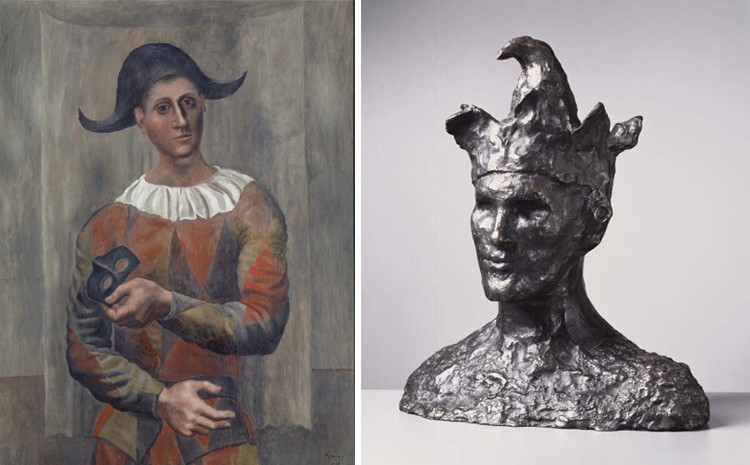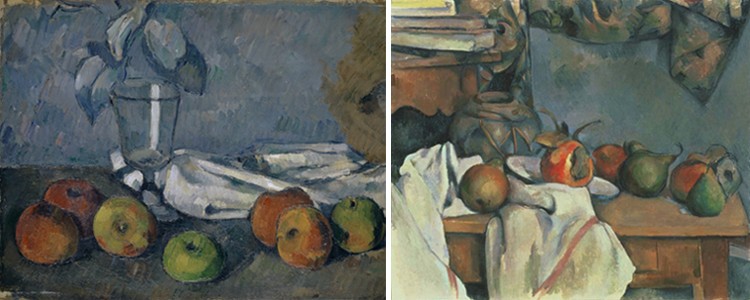In the Collection Comparisons series, we pair one work from Gauguin to Picasso: Masterworks from Switzerland with a similar work from the Phillips’s own permanent collection.

(left) Pablo Picasso, Harlequin with Black Mask, 1918. Oil on wood, 45 5/8 x 35 in. The Rudolf Staechelin Collection © 2015 Estate of Pablo Picasso / Artists Rights Society (ARS), New York (right) Pablo Picasso, The Jester, 1905. Bronze, overall: 16 1/8 x 14 x 8 1/4 in. The Phillips Collection, Washington, DC, Acquired 1938; © 2015 Estate of Pablo Picasso / Aritsts Rights Society (ARS), New York
Painted in Pablo Picasso’s Montrouge, France studio, Harlequin with Black Mask at left above, shows the artist’s embrace of classicism and the motif of the harlequin, which first appeared in his Sketchbook No. 59 in 1916. Also in 1916, French writer Jean Cocteau dressed as a harlequin to invite Picasso to participate in Parade, his project for Sergei Diaghilev’s Ballets Russes. Although a harlequin never appeared in Parade, Picasso painted one at the center of the huge curtain designed for the ballet, which may have inspired this painting.
Karl Im Obersteg and Duncan Phillips were also fascinated by this theme in Picasso’s work. In October 1923, Im Obersteg acquired Picasso’s Seated Harlequin (no longer in the collection) from Paul Rosenberg in Paris. Some 15 years later, Phillips purchased the sculpture The Jester (not currently on view at the Phillips) from Buchholz Gallery for $685.

